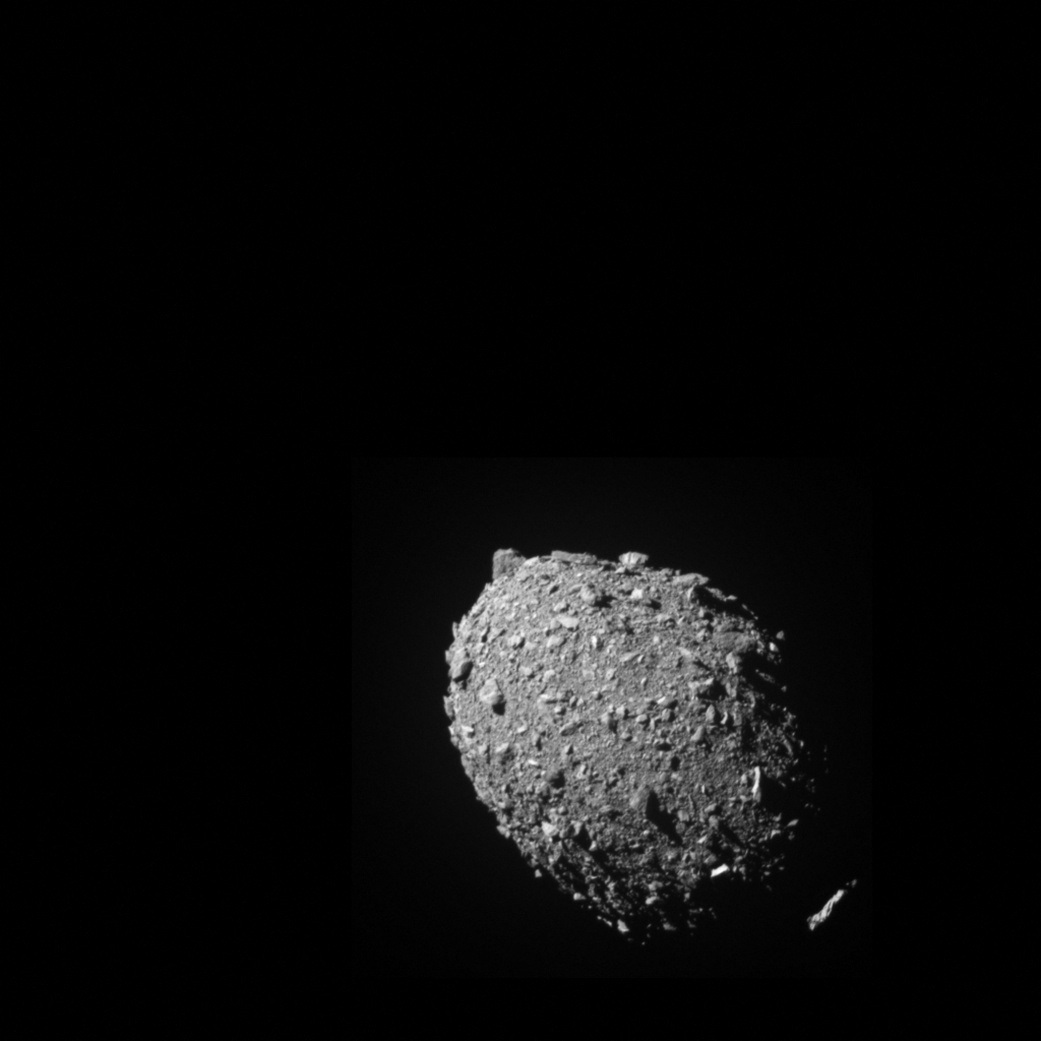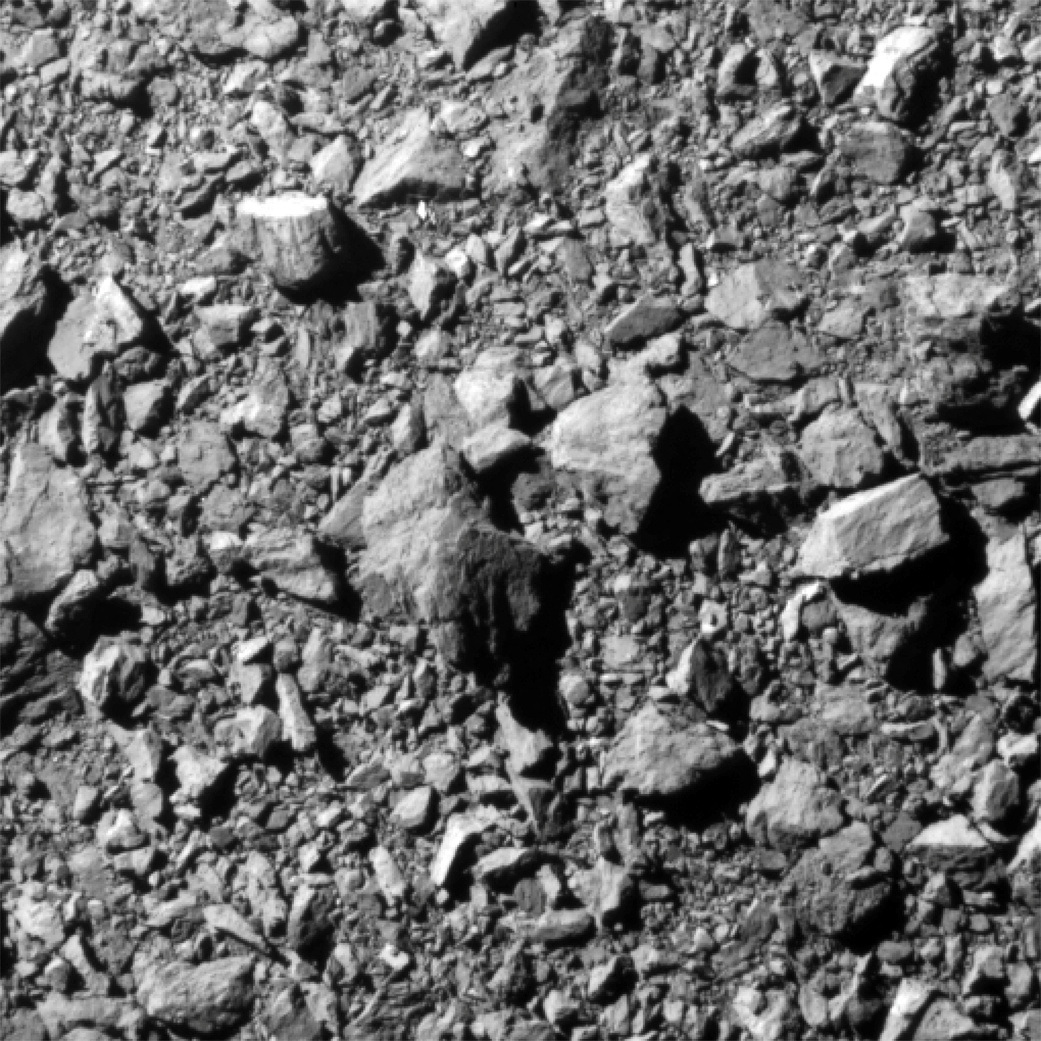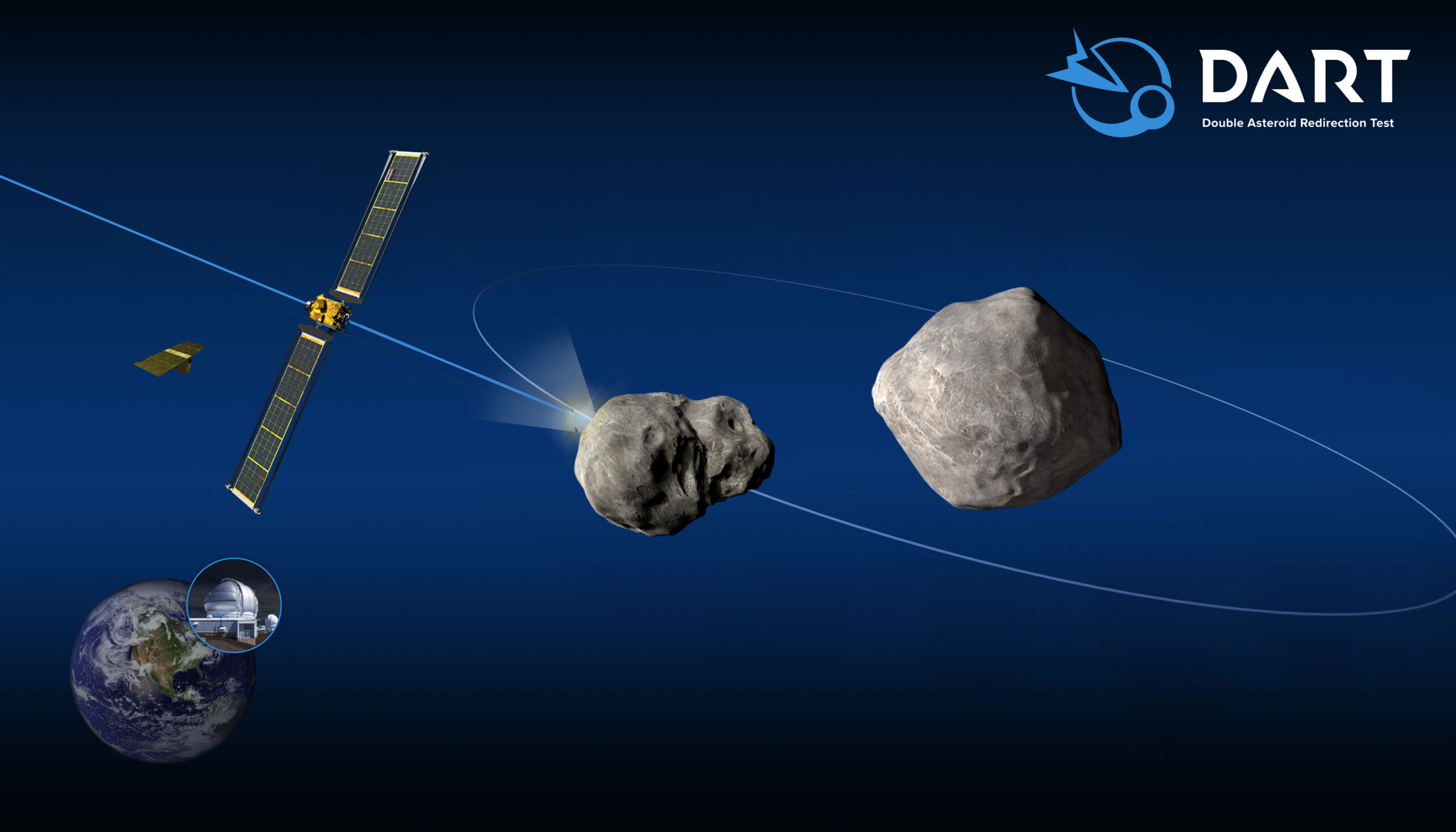On Monday, the DART spacecraft slammed into an extraterrestrial body, becoming the first test of a planetary defense system designed to avoid a potential doomsday meteorite collision with Earth.
The first time humanity ever tried to change the orbit of an asteroid was televised live from a mission control center near Washington D.C., 10 months after launching the project called DART.
DART’s livestream showed the cube-shaped “impactor” vehicle, no bigger than a vending machine with two rectangular solar arrays, streaking into the asteroid Dimorphos at 7:14 p.m. EDT (2314 GMT) some 6.8 million miles (11 million km) from Earth.
The $330 million endeavor, which has been in the works for seven years, is designed to see whether a spacecraft can maneuver an asteroid away from Earth by using its gravitational pull.

The success of the experiment will not be determined until next month, when ground-based telescopes observe the asteroid again. However, NASA officials said Monday that the spacecraft achieved its purpose and they are pleased with the results.
“NASA works for the benefit of humanity, so for us it’s the ultimate fulfillment of our mission to do something like this – a technology demonstration that, who knows, some day could save our home,” NASA Deputy Administrator Pam Melroy, a retired astronaut, said minutes after the impact that she was amazed by how well the mission had gone.

The DART mission, which was completed by a SpaceX rocket in November 2021, was led by NASA’s flight directors for the majority of the trip, with control transferred to an autonomous onboard navigation system in the final hours.
The impact of Tuesday evening’s bullseye was tracked in near real time from the mission operations center at the Johns Hopkins University Applied Physics Laboratory in Laurel, Maryland. Cheers erupted from the control room as second-by-second images of the target asteroid, acquired by DART’s onboard camera, got bigger and eventually filled up NASA’s live webcast before signal loss confirmed that the spacecraft had impacted Dimorphos.
Many people have questioned the authenticity of the livestream and the validity of the entire project itself, with people taking to twitter to share their doubts. “Its like shooting a BB at a whale,” Kyle Carasso said. “There tends to be this idea that humans can replicate or even replace systems in mother nature, yet every time we see only harm come from each and every attempt.”
DART was programmed to target an oblong asteroid “moonlet”, only 560 ft in diameter, that orbits a much larger parent asteroid. The system is part of a binary pair called Didymos, which just so happens to be the Greek word for twin.
NASA scientists said their DART test would not result in the creation of a new hazard by accident, and neither object presents any actual risk to Earth.
Dimorphos and Didymos are both tiny compared with thecataclysmic Chicxulub asteroid that struck Earth some 66 million years ago, wiping out about three-quarters of the world’s plant and animal species including the dinosaurs.
The last complete photo of asteroid moonlet Dimorphos, taken by the DRACO imager on NASA’s DART mission 12 kilometers from the asteroid and 2 seconds before impact, shows a 10-meter square region of the rock that is 31 meters across.
Smaller asteroids are more common and therefore present a greater theoretical concern in the near term. For these reasons, the Didymos pair is considered suitable test subjects by NASA scientists and planetary defense experts. An asteroid of Dimorphos size, while not capable of posing a planet-wide threat, could still level a major city if it made direct contact.
Finally, because the two asteroids are so close to Earth and are in a double configuration, they are ideal for DART’s first proof-of-concept mission, which is known as DART.
The DART project cost $324.5 million. $308 million was spent on spacecraft development, $68.8 million for launch services, and $16.5 million is expected to spent on operations and data analysis. For additional context, read our analysis of NASA’s planetary defense budget.

ROBOTIC SUICIDE MISSION
The goal was a once-in-a-lifetime attempt to alter an asteroid’s orbit by crashing one of its own spacecraft into it. DART slammed into Dimorphos at 15,000 mph (24,000 kph), generating the force scientists hope will be enough to shift the space rock’s orbit closer to its parent star.
According to APL experts, the spacecraft was shattered and left a tiny crater in the rocky surface of the asteroid.
The DART team predicted that by deflecting Dimorphos with a gravity tractor, the orbital path of the comet would be shortened by 10 minutes, but it suggested at least 73 seconds as a success, demonstrating that the technique is viable for deflecting an asteroid on a collision course with Earth – if one were ever discovered.
A very slight push on an asteroid years before it’s close to earth could be enough to change its course.
We will compare the starting location and orbital period of Dimorphos from our six-day observation in July to measurements taken after it hit an asteroid in October. This will help us determine if the asteroid moved and, if so, how much.
Monday’s test was also observed by a camera mounted on a mini-spacecraft the size of a briefcase, released from DART days in advance. In addition, telescopes such as Hubble and Webb were observing the event, but their images were not immediately available.
DART is the most recent in a slew of NASA missions to explore and interact with asteroids dating back to 2012, when OSIRIS-REx was sent out on a mission to retrieve a sample from Bennu. In December 2021, NASA launched an explorer spacecraft on a trip to the Trojan asteroid clusters orbiting near Jupiter.
The Dimorphos moonlet, one of the smallest astronomical objects to receive a permanent name, is just one of 27,500 near-Earth asteroids tracked by NASA. Although none are known to pose an foreseeable hazard to humankind at this time, many more asteroids likely remain undetected in the near-Earth vicinity according to estimates from NASA.


Solving as many problems as masturbation.